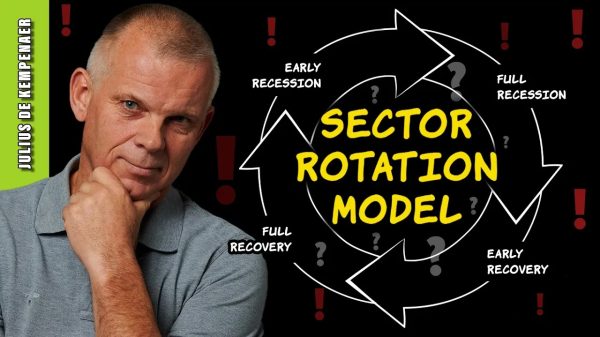A central plank of Donald Trump’s 2024 presidential campaign is to “totally obliterate the deep state.” By this he means to take tight control of the operations of the federal bureaucracy, which he blames for obstructing his agenda during his 2017–2021 presidency. He and several allies have plans to bring the administrative state to heel, the centerpiece of which is Schedule F, a class of management-level bureaucrats that he could hire and fire at will.
But Schedule F, whether implemented by a second Trump administration or some similarly aligned future president, would not yield the compliant administrative state its advocates envision. That’s not because bureaucrats are a rebellious or ideologically oppositional lot, but because they have strong incentives to follow established laws, administrative rules, and judicial decisions, few of which Trump sought to change while in office. Neither do he and his allies seem likely to change that if returned to the White House in 2025. If past is prologue, Schedule F and other “deep state” plans would be little more than gimmicks, though they would likely produce serious problems for the implementing president and the nation.
Specifics of the Proposal
Schedule F would allow an administration to reclassify some civil service jobs as exempted from civil service protections, so the administration could remove the jobholders and replace them with appointees serving at the will and pleasure of the president. These are not envisioned to be positions atop the federal workforce — the vaunted GS-13s, 14s, and 15s — but instead be mid-level managers who Trump and his allies believe are vital to getting the federal bureaucracy to implement their agenda.
This would not be a new policy; Trump briefly implemented Schedule F by executive order in the last months of his presidency. But his administration subsequently did not reclassify any positions, and Joe Biden rescinded the order within days of taking the oath of office.
It’s unclear how many jobs would be eligible for Schedule F reclassification. When implemented in late 2020, one Trump official said the number could be as high as 50,000, but another predicted only a small number of “bad apples” would actually be reclassified. (For reference, the federal civilian workforce is nearly 2.3 million workers.)
In a second Trump administration, the replacements apparently would come from outside government. According to numerous media reports, “Trump’s top allies” and “a string of conservative organizations” are assembling rosters of potential appointees who lack government experience and don’t want to pursue a career in civil service, but who are loyal to Trump and his agenda. It should be noted that Trump’s closest advisers have repeatedly distanced him from these roster-building efforts, but that only underscores the question of where a reinstated President Trump would get these appointees. He previously had plenty of trouble with bureaucratic appointments.
Breaking the Bureaucracy?
Both Trump’s allies and his critics believe Schedule F would radically alter the federal bureaucracy, turning it into a powerful tool of the presidency.
His allies are enthused. Russ Vought, who was Trump’s last Office of Management and Budget director and would likely have a major role in a second Trump administration, claims the next president must show “boldness to bend or break the bureaucracy to the presidential will.” Sen. J.D. Vance (R–OH), a top contender for the vice presidential slot, said bluntly, “If I was giving [a new president] one piece of advice, [it would be to] fire every single mid-level bureaucrat, every civil servant in the administrative state, [and] replace them with our people.”
The critics are alarmed. “If Mr. Trump has a chance to implement his various plans, expect a weaker American government, worse public services and the dismantling of limits on presidential power,” Georgetown professor Donald Moynihan warned last fall in a New York Times op-ed. Erica Newland of the group Protect Democracy predicted in a recent report that “Trump will reorient the federal government away from serving and empowering the American people, however imperfectly, and toward serving and empowering himself.” Early this year, American Federation of Government Employees president Everett Kelley told his members, “Every gain we have won, every value we hold dear, every aspect of our democracy and, yes, the very survival of our great union: it’s all on the line.”
Given Trump’s constant vows to use the federal government to visit “retribution” upon his critics, it’s understandable why they’d be alarmed. But both his allies’ and critics’ visions of him or some other president deftly maneuvering the administrative state to advance his policy and personal ambitions misunderstand the nature of bureaucracy.
Public Choice Lens
In envisioning a Trump-controlled bureaucracy, he, his allies, and his critics embrace a naïve view of government called Public Interest Theory. It holds that political actors — whether elected, appointed, or career civil service, or even voters themselves — are (or should be) motivated by the altruistic desire to advance the common good (whatever that might be).
Some six decades ago, a more realistic view of political actors emerged, known as Public Choice Theory. It holds that these actors are self-interested, just like people in the private sector. Bureaucrats specifically want rewards — monetary and non-monetary, including prestige — for their work and want their jobs to be secure and pleasant. That doesn’t mean they don’t care if their work helps others (many care a great deal), but they care because of personal ethics, or they believe their work is important, or they just want to keep and advance in their jobs. Under Public Choice, government workers are neither perfectly altruistic nor malevolently selfish, but human — like everyone else.
To keep and advance in their jobs, bureaucrats must follow voluminous and sometimes conflicting congressional statutes and directives (often vaguely written), executive orders, agency guidelines, and civil service rules and procedures. Making things tougher, the federal judiciary often steps in to spur, direct, or block the bureaucracy. Injecting thousands of short-term, inexperienced, presidentially appointed mid-level managers into this convoluted dynamic would not change career civil servants’ incentives or the statutes, directives, orders, guidelines, rules, procedures, and judicial decisions that those workers are incentivized to follow.
Rather, Schedule F would bungle and bog down the administrative state. That may appeal to Trump’s supporters, but consider how intertwined bureaucracy is in American life. Cumbersome processes are seldom improved by becoming outright gridlocked; instead, they need to be either improved or removed. Schedule F would do neither. It’s likely a president who employs Schedule F and increases bureaucratic gridlock would suffer devastating public backlash, as evidenced by government shutdowns.
Real Reform Requires More
None of this suggests there shouldn’t be significant change and downsizing of the federal bureaucracy. So how should this be done?
A true regulatory and bureaucratic reformer would take advantage of the 4,000-plus appointments to policymaking position throughout the US government that presidents can already make under current law. Capable and determined presidents have done so to great effect in recent history. Ronald Reagan’s administration, under the mantra “personnel is policy,” installed people who proved talented at changing federal operations and regulation. Bill Clinton did much the same thing. But Trump filled no more than about two-thirds of those positions at any point in his presidency, and many of his appointees were not up to the job. Moreover, he gave them little support nor a clear, well-strategized agenda, and he apparently did little to oversee their work. That’s one of the reasons his administration had so few accomplishments over its four years.
The chief locus for administrative state reform, however, is Capitol Hill. Put bluntly, the federal bureaucracy exists, persists, and expands in accordance with, and to carry out, the will of Congress. To reduce the administrative state, Congress would need to unwind or revise many of the interventionist statutes it has passed over the decades. A diligent, deal-making, strategically skilled president could push this process along, as Jimmy Carter, Reagan, and Clinton did, but Trump and his allies demonstrated little ability for such work during his presidency and there’s no reason to think they’ve gained that ability in the ensuing years.
Reforming the administrative state and rewriting statutes and regulations is hard work, requiring careful policymaking, talented people, and consensus-building. It’s not the product of gimmicks like Schedule F and databases of inexperienced people. That’s why reinstating Schedule F would likely prove disastrous — especially for people who truly want to see the bureaucracy downsized.

































